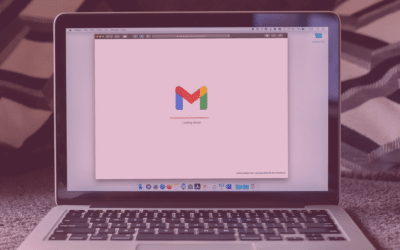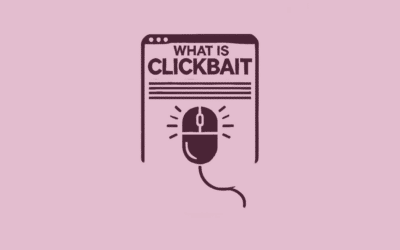Understanding Content Mapping
Content mapping is our way of ensuring that the content we create is perfectly aligned with the unique needs and challenges our audience faces at various stages of their decision-making journey. It’s like we’re putting ourselves in their shoes, anticipating their questions, and providing them with the exact answers they’re searching for, right when they need them. This strategy isn’t just about throwing content out into the void and hoping it sticks; it’s about making every piece of content we produce feel like it was custom-made for the person consuming it.
At its core, content mapping involves a deep dive into understanding our audience. We segment our audience based on various criteria such as demographics, behavior, and where they stand in the buyer’s journey – whether they’re just becoming aware of their problem (Awareness stage), considering different solutions (Consideration stage), or ready to make a decision (Decision stage). For each segment, we craft content that speaks directly to their situation. This could range from informative blog posts for beginners to more detailed comparison guides for those closer to a purchase decision. By doing this, we ensure that our content is not just seen but is also relevant and valuable, making every interaction with our brand meaningful.
The Importance of Content Mapping
Why do we put so much effort into content mapping? Because in order to capture and maintain our audience’s attention is more challenging than ever. People are bombarded with information from all sides, and their attention spans are shorter. That’s where the magic of content mapping comes into play. By delivering the right content at the right time, we cut through the noise and connect with our audience on a level that’s not just superficial but genuinely helpful.
Content mapping is critical because it transforms the way we approach our content strategy. Instead of a one-size-fits-all approach, we adopt a more personalized, targeted strategy that acknowledges the individuality of each member of our audience. This not only enhances the customer experience but also builds trust and credibility. Our audience begins to see us as a resource that understands their needs and provides them with solutions, not just a business trying to sell them something. This trust is the foundation of a strong, lasting relationship that goes beyond a single transaction and fosters loyalty and advocacy for our brand.
Content mapping is not just a tactic; it’s a shift in how we approach our relationship with our audience. It’s about being empathetic, insightful, and genuinely helpful, which in turn drives engagement, conversions, and loyalty. This is why we consider content mapping an indispensable part of our content strategy, enabling us to create more impactful, meaningful interactions that not only meet the needs of our audience but also align with our business goals.
Benefits of Effective Content Mapping
Starting a content mapping journey unlocks numerous benefits for our business. First and foremost, it allows us to create more targeted and relevant content. By understanding the specific needs and pain points of our audience at each stage of their journey, we craft content that speaks directly to them, addressing their concerns and providing value.
Moreover, effective content mapping enhances our content’s effectiveness in nurturing leads. As we guide our audience through their journey with content tailored to each stage, we build trust and credibility, making it easier to convert leads into customers.
Additionally, content mapping streamlines our content creation process. With a clear understanding of what content is needed and when it positions us to plan and produce content more efficiently, ensuring we’re always delivering content that resonates with our audience and drives our business objectives forward.
How to Create an Effective Content Map
Define Your Content Marketing Purpose and Goals
The first step in creating a compelling content map is to define the purpose and goals of our content marketing efforts. This clarity guides our strategy, ensuring every piece of content we produce serves a specific function in our broader marketing objectives. We ask ourselves: What do we aim to achieve? Are we looking to increase brand awareness, generate leads, or establish thought leadership? Setting clear, measurable goals allows us to tailor our content strategy to our business needs, ensuring our content not only reaches but also resonates with our target audience, driving them toward our desired action.
Research and Segment Your Target Audience
Understanding our audience is crucial to content mapping success. We dive deep into researching and segmenting our target audience to grasp their needs, preferences, and behavior patterns. This involves collecting data on their demographics, interests, and online behavior, allowing us to segment them into distinct groups with common characteristics. This lets us personalize our content effectively, making it more relevant and engaging for different audience segments.
Develop Buyer Personas and Customer Journey Maps
With a clear understanding of our audience segments, we move on to develop detailed buyer personas and customer journey maps. Buyer personas are semi-fictional representations of our ideal customers based on real data and educated speculation about customer demographics, behavior patterns, motivations, and goals. Customer journey maps, on the other hand, outline the path our customers take from becoming aware of their problem to considering and deciding on our solution. These tools are instrumental in visualizing the customer’s experience and identifying key content opportunities that align with their needs at each stage of their journey.
Map Content for Each Stage of the Buyer’s Journey
Once we have detailed buyer personas and customer journey maps, we then map out the content for each stage of the buyer’s journey. This involves identifying the types of content that will best meet the needs and answering the questions of our potential customers at the awareness, consideration, and decision stages. For example, at the awareness stage, we might focus on educational blog posts and infographics that address the initial problem, while at the decision stage, product comparisons and case studies can provide the final push toward a purchase.
Generate Content Ideas and Topic Clusters
After mapping out content for each stage of the buyer’s journey, our next step is to generate lots of content ideas and organize them into topic clusters. This involves brainstorming topics that align with our audience’s interests and the goals of our content strategy. We consider questions our audience might have, industry trends, and any gaps in our existing content.
Topic clusters revolve around a central “pillar” topic, with various related “cluster” content that delves into the specifics. This approach not only helps us cover a topic thoroughly but also boosts our SEO efforts by creating a structured network of internal links. It ensures our audience can easily find comprehensive information on topics they care about, enhancing their engagement and keeping them on our site longer.
Plan and Organize Content Using an Editorial Calendar
With an abundance of content ideas at our disposal, planning and organizing become paramount. We turn to an editorial calendar to bring structure to our content strategy. This tool helps us schedule when and where each piece of content will be published, ensuring a consistent and strategic content rollout.
An editorial calendar keeps us on track, allowing for flexibility to adapt to industry changes or trending topics. It also fosters collaboration among our team, providing a clear overview of content in the pipeline and responsibilities for each piece. This level of organization is essential for maintaining a steady stream of high-quality content that engages our audience and drives our marketing goals.
Promote and Repurpose Content for Maximum Reach
Creating great content is just the beginning. To maximize its reach, we actively promote our content across various channels and repurpose it to extend its lifespan. Promotion involves sharing our content on social media, through email marketing, and even paid advertising to ensure it reaches our target audience.
Repurposing content allows us to leverage the full potential of our efforts by adapting a single piece of content for different formats or channels. A blog post can transform into a series of social media posts, an infographic, or even a video, making our content accessible to a broader audience with varying preferences.
By following these steps, we ensure our content map is not only comprehensive but also dynamic, catering to our audience’s evolving needs and maximizing the impact of our content marketing efforts.
Tools and Templates for Content Mapping
Recommended Content Mapping Tools
In the realm of content mapping, having the right tools at our disposal can significantly streamline our processes and enhance our effectiveness. We’ve explored and identified several content mapping tools that stand out for their functionality, user-friendliness, and ability to provide valuable insights into our content strategy.
First, content management systems (CMS) like WordPress and HubSpot offer intuitive platforms for organizing and optimizing our content, with built-in analytics to track performance. For more detailed content planning and mapping, tools like Trello and Asana allow us to visualize our content calendar and manage workflows efficiently, ensuring our team stays on track with our content goals.
For deeper insights into our audience and their journey, analytics tools like Google Analytics and SEMrush offer invaluable data on user behavior and content performance, helping us refine our content strategy for better engagement and conversion.
Content Mapping Template Gallery
Alongside these tools, leveraging content mapping templates can provide us with a structured framework to guide our content planning process. These templates typically include elements like buyer persona outlines, journey stage identifiers, content type suggestions, and distribution channels, making it easier for us to align our content with our audience’s needs and preferences.
We’ve curated a collection of content mapping templates, ranging from simple spreadsheet formats to more comprehensive visual diagrams, each designed to cater to different aspects of the content mapping process. These templates serve as a starting point, which we can customize to fit the unique requirements of our content strategy, ensuring we cover all bases from content creation to distribution.
By integrating these tools and templates into our content mapping efforts, we equip ourselves with the resources necessary to create a dynamic, customer-focused content strategy that not only attracts but also retains and converts our target audience.
Expert Tips for Successful Content Mapping
Educate and Engage Your Audience
A key to successful content mapping lies in our ability to educate and engage our audience through every piece of content we create. We aim to deliver value in a way that not only informs but also captivates our audience. This involves crafting content that addresses their questions, solves their problems, and enriches their knowledge, all while keeping them entertained and engaged. We use storytelling, compelling visuals, and interactive elements to make our content more relatable and memorable. By positioning ourselves as trusted advisors, we build a loyal community around our brand, driving deeper engagement and fostering long-term relationships with our audience.
Improve Conversion and Customer Loyalty
To turn engagement into tangible business outcomes, our content mapping strategy focuses on improving conversion rates and bolstering customer loyalty. We achieve this by creating clear, compelling calls-to-action (CTAs) that guide our audience towards the next step, whether it’s subscribing to a newsletter, downloading a whitepaper, or making a purchase. Personalization plays a crucial role here, as tailored content recommendations based on user behavior and preferences can significantly boost conversion rates.
Furthermore, we prioritize customer retention by continuously providing value beyond the initial sale. Through educational content, support resources, and community-building initiatives, we keep our customers engaged and invested in our brand. This not only enhances customer loyalty but also turns satisfied customers into brand advocates, amplifying our reach and attracting new prospects to our business.
In crafting this ultimate guide to content mapping, we’ve laid out a comprehensive framework designed to create engaging customer experiences through strategic content planning. From understanding the essence of content mapping and its benefits to exploring the steps involved in creating an effective content map, we’ve covered the essentials that will empower us to connect with our audience on a deeper level.
We also discussed tools and templates that can facilitate our content mapping process, along with expert tips to ensure our content not only reaches but also resonates with our target audience, driving engagement, conversion, and loyalty.
As we move forward, the next steps involve putting these insights into action. We invite our team to dive deep into this process, leveraging the strategies and insights we’ve shared to develop a content plan that resonates with our audience’s needs while aligning with our business objectives. At BASE, we stand ready to support this journey, offering our expertise in SEO content writing to craft compelling content that not only engages but also elevates the customer experience, laying the foundation for meaningful connections and sustained growth.



